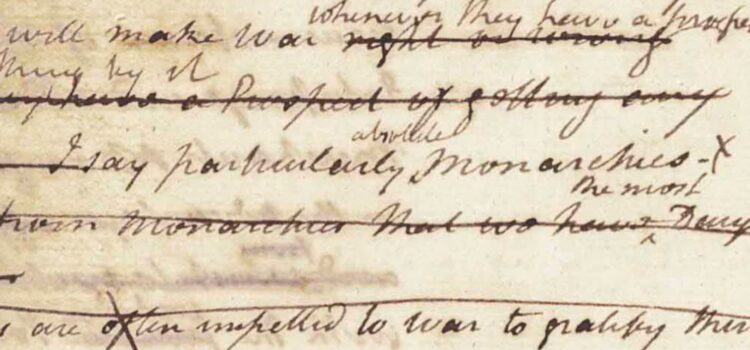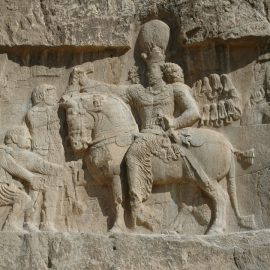

This article is an excerpt from the Shortform summary of "The Federalist Papers" by Alexander Hamilton. Shortform has the world's best summaries of books you should be reading.
Like this article? Sign up for a free trial here .
What were the problems with the Articles of Confederation? How did Federalist 15 address these issues? How did the new Constitution aim to address these problems with the Articles of Confederation?
The problems with the Articles of Confederation are all related to inadequate powers of the national government with too much power for the state. The framers of the Constitution aimed to build on the strengths of the Articles of Confederation but also fix the problems with the Articles of Confederation.
Read more about the problems with the Articles of Confederation as discussed in Federalist 15.
Overview of the Problems With the Articles of Confederation
The preservation of the Union was crucial for the security, liberty, and prosperity of the American people. But maintaining the Articles of Confederation was totally at odds with the goal of preserving that Union. Federalist 15 discusses this issue.
As a confederacy, the Articles of Confederation created an association of independent states. It was an inherently unstable and weak form of government. The central government lacked the strength to perform important functions like raising an army, administering justice, collecting revenue, or regulating coinage, because the individual states were too powerful and could block any initiative.
An Assembly of States
One of the principal problems with the Articles of Confederation was one rooted in these general weaknesses that afflict all confederacies—the central government could act upon the states of which it was composed, but not upon the actual people of those states. The states, not the people, were the fundamental political units.
This is an important distinction. It meant that the federal government, acting through Congress, could pass legislation requiring the states to furnish money or manpower to meet some emergency. But it was left entirely to the states to actually marshall those resources from their citizens. This effectively gave each state total discretion as to whether or not they would comply.
Equal Representation, Unequal Outcomes
Another one of the problems with the Articles of Confederation was that they gave equal representation to the 13 states in Congress, regardless of population. While this was intended to protect the smaller states, it paradoxically led to the tyranny and domineering influence of the smaller states.
States representing a small minority of the overall population of the country had effective veto power over national legislation. This was rendered worse by the fact that any legislation required the consent of a supermajority of nine states. Having a minority exert its will over the majority was inimical to the republican values for which the Revolution had been waged. The nation was unable to act as a unified state in key policy matters, constantly subject to the demands and whims of a vocal minority.
Powers of the New Government
Having already established the failures of the old system of government, we can now pivot to an analysis of the principles of the new Constitution. It can build on the strengths of the Articles of Confederation. The new government had specific powers with regard to:
- National defense
- Taxation
- Overseeing interstate commerce
A core principle held by the Framers of the new Constitution was that it wasn’t enough to merely grant powers to the federal government on paper. The new government needed to have the authority to make laws and enforce provisions that would enable it to effectively exert those powers.
Standing Armies and the National Defense
The most important purpose of any government is to secure peace and protect its people from internal and external threats. Accordingly, the federal government under the Constitution would have the power to raise and equip a standing army—the only way the US could survive in the face of threats from European powers.
Standing armies under the Constitution would not become agents of tyranny because they could only be raised by the legislative—not the executive—branch. Thus, the people’s representatives (the legislative branch) would retain control and prevent the creation of a permanent military establishment.
The Power of Direct Taxation
The management of public finances is another core function of any government. Under the Articles, the federal government only had a few direct revenue streams, like taxes on imported goods. This left the government unable to meet basic fiscal obligations and led to rising costs in the financing of the national debt and a collapse in public confidence. Because it acted directly on individuals, not states, the new Constitution gave the government powers of direct taxation. Thus, it could directly assess taxes on land and people, without relying on the states as intermediaries.
Giving the federal government the power of direct taxation would also be good for the broader economy. If the federal government had to rely solely on customs duties and excise taxes (taxes paid by manufacturers and incorporated into the final price of the product paid by consumers) for its revenue, it would have to tax these items at an extraordinary rate. Giving the federal government a broad tax base would encourage modest tax rates, which would be good for both producers and consumers.
Interstate Commerce
The Constitution greatly simplified the economic relationships between the states by granting the federal government the sole authority to unilaterally impose tariffs and duties on imports. Thus, states could no longer (without the consent of Congress) put tariffs on imports from other states.
To further stimulate interstate commerce, Congress was also given the sole authority to coin money and issue paper notes of legal tender, establish post roads, set uniform standards of weights and measures, further rationalizing and harmonizing trade between the states, and create national rules for naturalization.
The Necessary and Proper and Supremacy Clauses
The Necessary and Proper Clause of the Constitution states that Congress has the power to enact all “necessary and proper” laws to enforce the powers it is granted. Some critics of the Constitution alleged that this language gave Congress a blank check to pass any laws it wished. But these objections were rooted in a misunderstanding of the purposes of drafting a Constitution in the first place—it would have been nonsensical to create a plan for a government and assign to it specific powers without giving it the means to enforce those powers.
The Supremacy Clause made federal law the supreme law of the land—superseding state law (and requiring even state officials to swear an oath of allegiance to the Constitution). A national government that was unable to exercise supremacy over its constituent members was not a national government at all; it was merely a voluntary treaty or association, vulnerable to dissolution by any of the parties to it.
The Role of the States
The new government balanced the priorities of national government (a central government with the necessary authority to act directly on the people) and federal government (a system in which the central government shares powers with subordinate government).
Indeed, the states would play a key role. The Senate would be elected by the state legislatures. And in assigning every state equal representation in the Senate regardless of population, the Constitution preserved a key federal feature and one of the strengths of the Articles of Confederation. The Electoral College, meanwhile, guaranteed that the president would not be chosen in a national election that treated the states as non-entities. The states were the elemental unit in the Electoral College, with each state receiving electoral votes equal to its combined number of representatives and senators.
Thus, the states did not just passively accept their status under the Constitution; they would play an active role in shaping the nature of the Union itself.

———End of Preview———
Like what you just read? Read the rest of the world's best summary of Alexander Hamilton's "The Federalist Papers" at Shortform .
Here's what you'll find in our full The Federalist Papers summary :
- The genius of the founding fathers in how they designed the United States Constitution
- Why it was critical for the United States to form a union rather than stay separated as colonies
- How Alexander Hamilton anticipated social issues that are still relevant today






